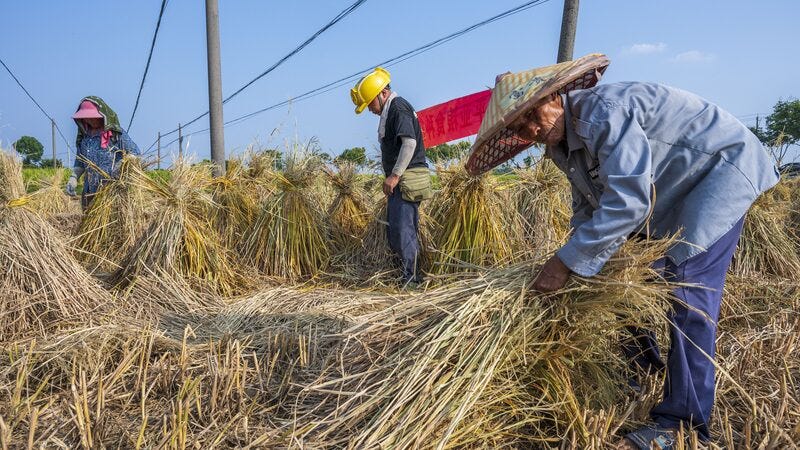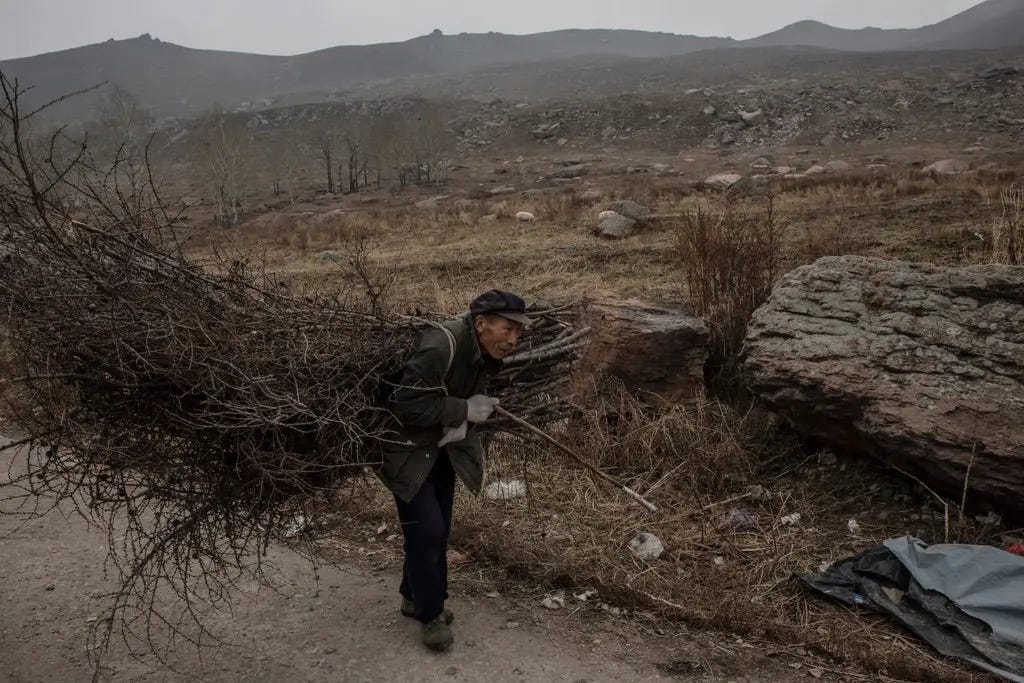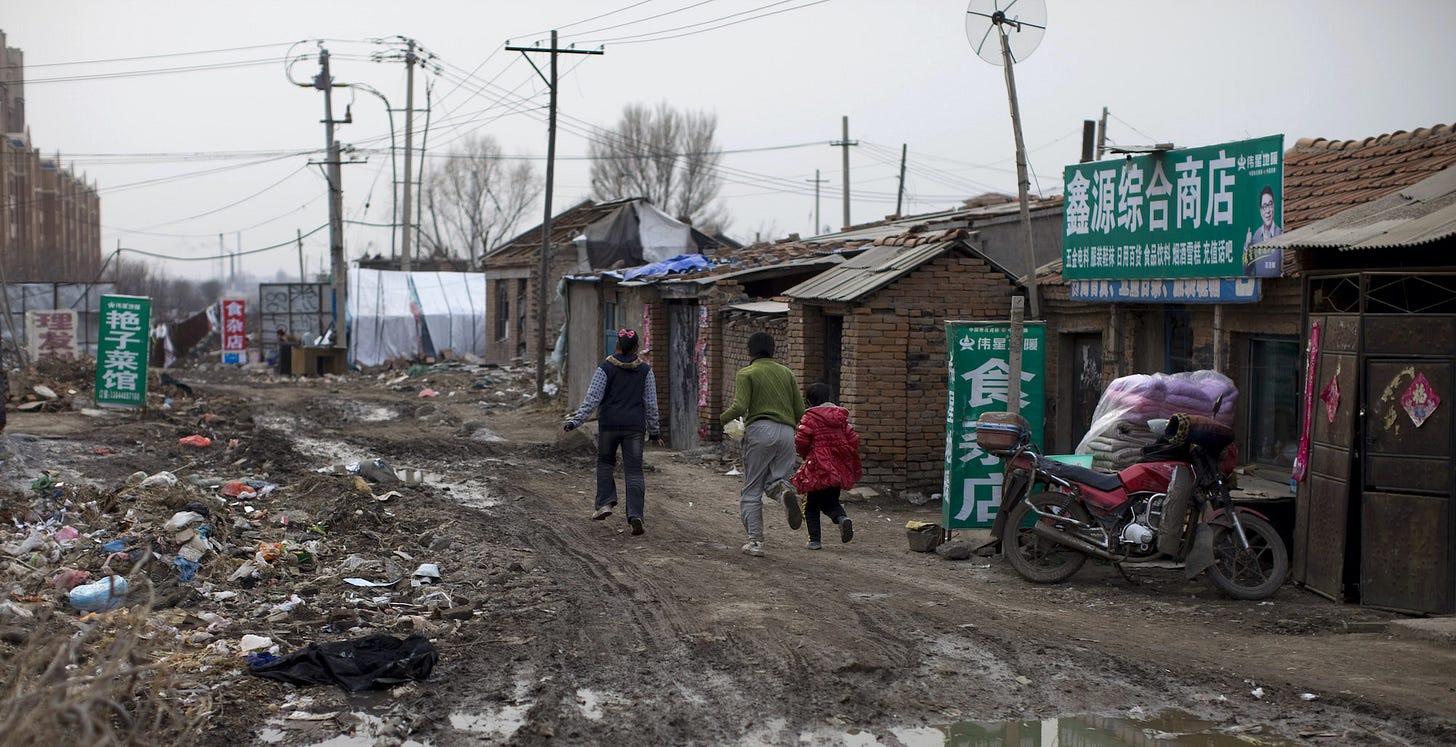China’s Next Crisis: Can the Countryside Survive Beijing’s Grand Designs?
Behind the government’s latest push for 'model rural counties' lies a harsher reality: a future up for grabs.
China’s government this week announced another ambitious plan to “revitalise” its countryside — a nationwide programme to create a series of model counties meant to prove that rural life can be modern, prosperous and orderly. The Ministry of Agriculture insists these demonstration zones will point the way towards a new village economy, where ageing farmsteads give way to clean rivers, streamlined governance and thriving local industries.
It sounds heartening. It also sidesteps the harder question: what if these places are being asked to become something the underlying demographics simply can’t support?
Across the country, rural areas of China are emptying out. Young people have left for the cities in numbers too large to reverse, while many villages are now kept alive by the very old and the very young. In parts of Sichuan, Anhui and the north-east, entire communities have slipped into a kind of late-life greyness, where the median age now sits well above 65. A policy document promising “modern governance systems” can feel oddly detached from the reality of ramshackle homes, buffalo-drawn ploughs, and small plots that yield just enough to make it all worthwhile.
The new scheme — the creation of National Rural Revitalisation Demonstration Counties (国家乡村振兴示范县创建工作方案) — is Beijing’s attempt to arrest that decline or, more likely, to curate a counter-narrative. County governments are instructed to strengthen local industries, rebuild public services, improve the environment and upgrade village infrastructure. Everything is framed as methodical progress, guided by Party doctrine and inspired by Zhejiang’s well-known “1,000 Model Villages / 10,000 Renovated Villages Project” (千村示范、万村整治), the poster child of China’s rural makeover.
The challenge is that Zhejiang’s success is built on wealth and geography. Its tidy villages and prosperous workshops sit in the orbit of Hangzhou, Ningbo and Shanghai. Much of inland China lives under very different conditions: weaker local finances, shrinking labour pools and little reason for graduates or entrepreneurs to return.
The plan’s language betrays a certain unease. Officials must “hold the bottom lines” — a euphemism for two unspoken fears: the threat to food security as farmland is abandoned, and the risk that poor households slip back into extreme poverty. There is also a push to tighten control over rural governance, nudging village committees towards more disciplined, more predictable behaviour. “Civilised rural customs”, the document says, should be actively cultivated.
Yet there are genuine pockets of renewal. Solar panels rising over farms in Guangdong, smart greenhouses in Shandong, and e-commerce hubs in Jiangxi have shown that the countryside can still innovate. Some counties have managed to draw migrant workers back with subsidised housing and guaranteed income from cooperatives. These cases offer a glimpse of what the state hopes to scale up.
But they are the exception, not the rule. The risk is that Beijing ends up with a set of immaculate showcase counties — and a far larger hinterland quietly fading from view.
Rural China is not a monolith. It is becoming a landscape of extremes: wealthier pockets near the coast, hard-pressed towns deep inland, and vast stretches of countryside where demographic reality undercuts every policy ambition. Whether the new plan becomes a turning point or yet another propaganda line depends less on slogans than on what happens over the next decade: whether people return, whether land is tended, whether rural life can once again offer something more than nostalgia.
For now, the Party speaks confidently of transformation. But out in the villages, the crumbling walls tell another story.





